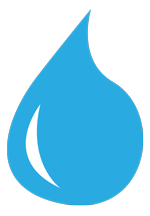
Meet Helen
Thank you for visiting our website to see the heart touching video Helen sent us, which inspired the book we mailed you and to see other information to partner with us!
Check out all the information to partner with us
Check Our Ambassador Section Where You Can See A Ton Of Ideas For Your Fundraising
Go Ambassador section
Click here to see just a few examples of folks who partnered with us
Check our Partners Stories

Suggested Ways to Engage Your Students in Raising Funds for the Filter and Buckets
In the past students have had baked goods sales, sold lemonade, hosted a pancake breakfast, did a bike or jog-a-thon, went door to door to neighbors’ houses with a bucket and/or sign asking for donations, and many other fundraising activities. Please see our Ambassador Section on our website for more ideas, and/or have fun coming up with other creative fundraising activities!

Hands On and Visual Demonstrations: A Day in the Life of Walking for Water
The Walker Demonstration:
Have your students take turns carrying an empty 5 gal. bucket from one side of the playground or field to the other. Next, fill the bucket just halfway with water and have them carry it one way. The students will immediately experience the difference. Then remind them that the children they will be helping to have safe water to drink are currently doing this for 2-3 (sometimes more) miles one way!
The ‘Icky’ Test (The Cause):
Two glass containers are needed, one filled with clean water and the other filled with dirty water (we usually just mix in some dirt from the playground). Talk about the differences and what could happen if they had to drink the dirty water. After they do the next activity, The Marble Visual (The Cause), they should make the connection between the dirty water that takes hours to retrieve every single day (the cause) and the marbles representing children who die (the effect).
The Marble Visual (The Effect): (Over 1,835 precious children die each day from bacteria in contaminated water. That is one child every 47 seconds every day!)
This helps visually demonstrate the amount of children who die from dirty water every 47 seconds. You will need a glass container and marbles. Give each child a marble and every 47 seconds have them drop a marble in the container. After every child puts in a marble, discuss how many children died in that short time. Now do the reverse taking out a marble every 47 seconds. Tell them that is how many lives would be saved. Have a discussion about the importance of clean and safe water to drink.
Learning Application:
Have the students make posters to take home or hang up in the classroom about what they learned. Discuss with your students what part of Helen’s story impacted them the most.

We are working every day to change this, but we greatly need your help!
The mission of Water4Life is to bring clean and safe water to all. By empowering people with this fundamental human need, we are saving lives together and helping provide families with hope and the opportunity to break the cycle of poverty.
The Power of Safe Water!!!
Access to safe water protects the lives of children and all family members and improves their basic lives in so many ways. Access to safe water turns problems into potential: unlocking education, economic prosperity, and improved health. Every human being deserves to define their own future, and safe water makes that possible.
What is the World Water Crisis?

785 million people in the world live without clean water. That is 1 in 9 humans who lack access to safe drinking water every day.







Globally, at least 2 billion people use a drinking water source contaminated with faeces. Contaminated water and poor sanitation are linked to transmission of diseases such as cholera, diarrheas, dysentery, hepatitis A and typhoid.







1.7 billion cases of diarrhea with an estimated 446,000 deaths.







3 million cases of cholera with an estimated 95,000 deaths







11 million cases of typhoid fever with an estimated 129,000 typhoid fever deaths.







Additionally, as a result of poor access to clean water and hygiene over 270,000 children die during their first month of life from conditions, including prematurity, which could be prevented through access to clean water, sanitation, and hygiene in health facilities
( Facts reported in 2019 by the CDC, WHO and UNICEF )
